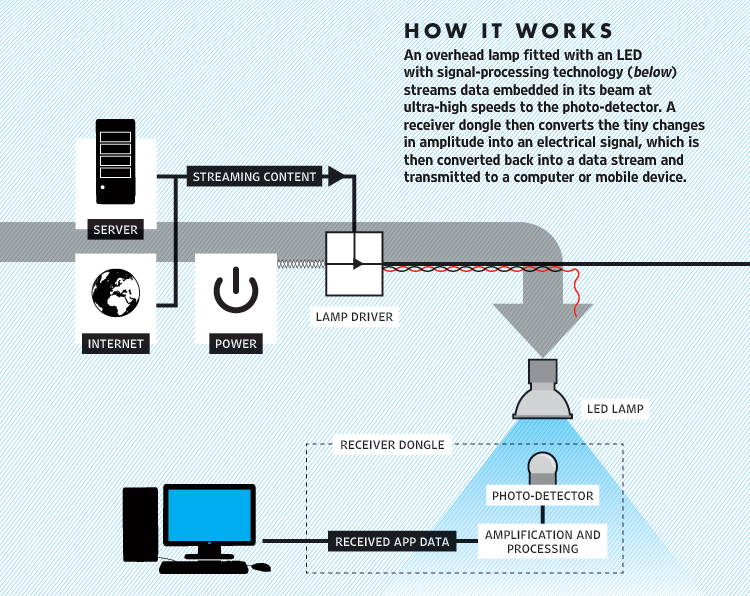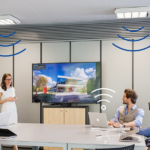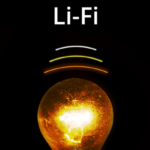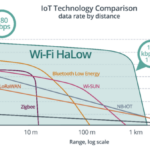Optical wireless communications in the form of “Li-Fi” is a technical alternative to RF-based Wi-Fi with distinct strengths and weaknesses.
You are undoubtedly familiar with Wi-Fi – a contraction of “Wireless Fidelity”– which has become the de facto standard for wireless connectivity between the Internet or local area networks and PCs, smartphones, countless appliances, gadgets, and countless other devices and functions. Wi-Fi’s “birth” (or at least conception) began in 1997 when the IEEE (with industry support) established the channel-hopping 802.11 standard for low-power basic communications in the unlicensed ISM band (a portion of the electromagnetic spectrum reserved internationally for industrial, scientific, and medical applications) around 2.4 GHz, with a nominal range of 100 meters and maximum raw data rate of 2 Mbps.
Since then, Wi-Fi has expanded with many versions at higher frequencies, higher and lower data rates, and different maximum ranges. Nearly every desktop PC, laptop PC, and smartphone, as well as many of these other devices, now comes with one or more versions of Wi-Fi as a built-n function.
But Wi-Fi-based RF is not the only “wireless” option available. Light can also be used to transfer energy and thus data in a wireless link. That’s the intention of Li-Fi, or “light fidelity,” which is a play and attempt to leverage the user comfort with the Wi-Fi designation. This FAQ looks at some Li-Fi technical details and its place in the universe of wireless, cable-free connectivity.
Q: What is the basic idea of Li-Fi?
A: In principle, it’s very simple, and there’s nothing new about the idea of using light for communications (think flashlights, lanterns, even fire): Li-Fi uses a modulated beam of light to communicate over a modest distance of about ten meters, generally in an enclosed space. To make this happen, the laptop PC or smartphone needs an optical transmitter/receiver and links to an optical transceiver node – analogous to a Wi-Fi modem – to connect to the Internet just as with Wi-Fi (Figure 1). (The already-available LED/photoreceiver (photodetector) in many of these devices can be used in some cases, but with performance limitations, as they are not optimized for the Li-Fi link.)

Q: What segments of the optical spectrum does it use?
A: In principle, optical wireless communications can use infrared, visible, and even ultraviolet light. At present, most of the activity is in the visible part, with some in the infrared. The beam intensity for visible light is so low that it is nearly invisible to the users.
Q: What is the difference in available spectrum (related to bandwidth and data rate) of Li-Fi optical communications compared to Wi-Fi RF communications?
A: There are several ways to measure this, but in simplest terms, optical offers 300 THz of spectrum compared to Wi-Fi’s 300 GHz, a difference of 1000×. Of course, the difference in actual use is far less, but it is still significant.
Q: That’s it? Sounds pretty simple.
A: It is simple, at least in principle. Of course, it is not simple in reality, as there are always challenges in actual implementation. Still, basic optical components and technologies are relatively mature (think of the basic infrared remote control or the IrDA (Infrared Data Association) standard with its many speeds and wide use.
Q: What’s the history of Li-Fi?
A: Dr. Harald Haas, Professor of Mobile Communications at the University of Edinburgh, coined the term “Li-Fi” at his 2011 TED Global Talk, where he introduced the idea of “wireless data from every light.” He and Dr. Mostafa Afgani are the co-founders of a company called “pureLiFi”. Prof. Haas continues to be a major proponent and evangelist for Li-Fi. His rationale has been that as area lighting transitions to LEDs, these same LEDs can be modulated at super-high rates (in the megahertz range) to function as data emitters. The ultra-high-rate flickering due to the modulation will be completely unnoticed by users.
Q: Is there an IEEE standard for Li-Fi, as there is for Wi-Fi?
A: The answers are “not quite” and “sort-of.” An IEEE 802.11 standard is in development and is expected in late 2021 or early 2022. There is an industry association called LiFi.co, which promotes Li-Fi and acts as a clearinghouse for industry news, developments, and products. (Note that the association and many others write out LiFi without the dash.)
There is no official logo yet, but this one and variations of it are in wide use (Figure 2) and note the similarities to the Wi-Fi logo.

Q: How and where has Li-Fi been demonstrated?
A: It has been shown at industry events such as the Mobile World Congress in Barcelona and CES in Las Vegas.
Part 2 delves into to characteristics of Li-Fi and the basic hardware and software.
EE World Related Content
Report: Global Light Fidelity (Li-Fi) Technology Market to Reach $35.82 Billion By 2028
Textured LED Gives Green Light To Li-Fi
Light-Based Transmission Test Comes to the Workplace
This Wireless Technology Is 100 Times Faster Than Wi-Fi
Company turns LED lights into a Wi-Fi network
External References
Wi-Fi and IrDA
- CableFree, “WiFi Standards and Development History”
- Brittanica, “Wi-Fi networking technology”
- McCannTech, “Wi-Fi 101 — Wi-Fi Origins and History”
- ThoughtCo, “Who Created Wi-Fi, the Wireless Internet Connection?”
- Wikipedia, “Infrared Data Association”
Technical and Vendor Material
- Wikipedia, “Li-Fi”
- Signify, “What is LiFi?”
- Pure LiFi, “LiFi Technology”
- co, “LiFi: Wireless data from every light bulb”
- Science Direct, “LiFi is a paradigm-shifting 5G technology”
- Avnet, “Li-Fi: IoT at the Speed of Light”
- Iberdrola, “LiFi, the internet at the speed of light”
- Versa Technology, “Li-Fi: Internet at the Speed of Light”
- Li Fi Tech News, “Top 15 Li-Fi Applications”
- IEEE Internet Initiative, “Li-Fi: An Overview, Part 1 – Purpose and Function”
- Mordor Intelligence, “Li-Fi (Light Fidelity) Market – Growth, Trends, COVID-19 Impact, and Forecasts (2021 – 2026)”
- VLNcomm, “Limitless Connectivity”\IEEE, “Optical data transmission using portable USB Li-Fi module (dongle)”
- International Journal of Engineering and Advanced Technology (IJEAT), “Data Transmission using Visible Light Communication”
- International Research Journal of Engineering and Technology (IRJET), “Data Transmission Through Li-Fi”
- International Journal of Advance Research in Computer Science and Management Studies, “Li-Fi Technology: Data Transmission through Visible Light“
- Arvix, “Conceptual Design of LiFi Audio Transmission Using Pre-Programmed Modules”
- Oledcomm, “What is LiFi?”
- Circuit Digest, “Li-Fi based Text Communication between Two Arduino”
Li-Fi News and Updates
- IEEE Spectrum, “Li-Fi Scrubs Into the Operating Room”
- IEEE Spectrum, “Infrared Light Promises Ultrafast Wireless Communications”
- LEDs Magazine, “Li-Fi picks up speed. But oh, that dongle…”
- Digital Trends, “Whatever happened to Li-Fi?”
- Photonics.com, “US Army to incorporate Li-Fi technology”





Leave a Reply